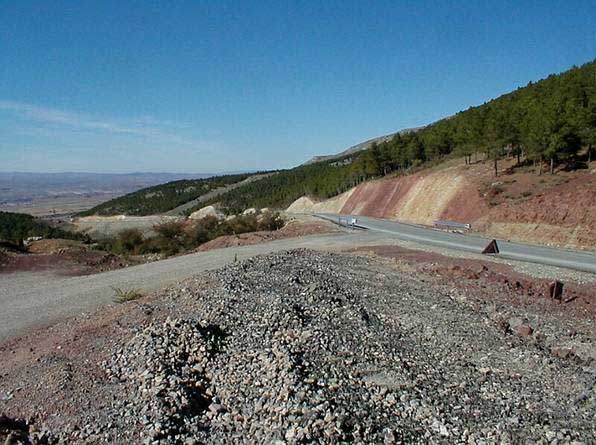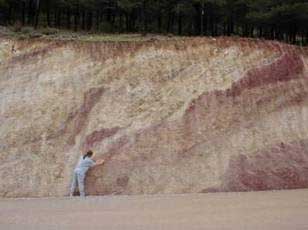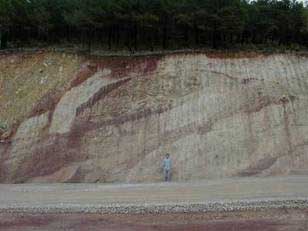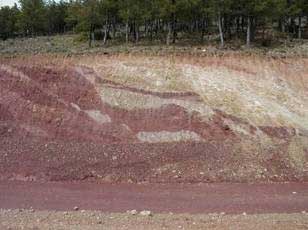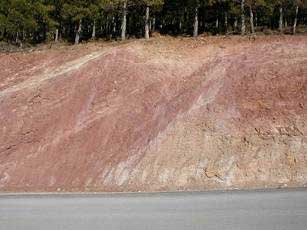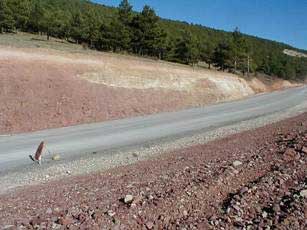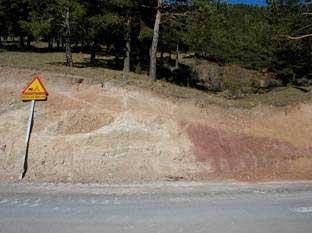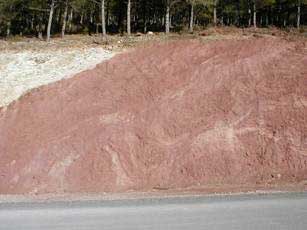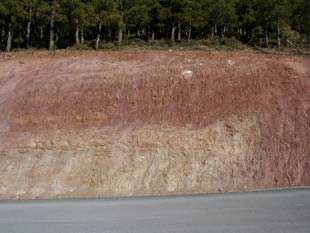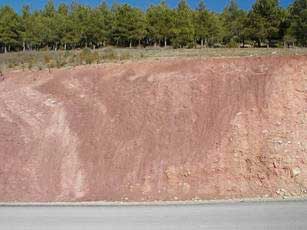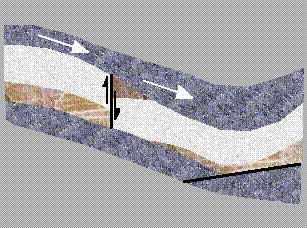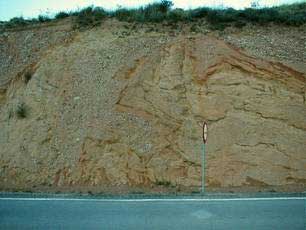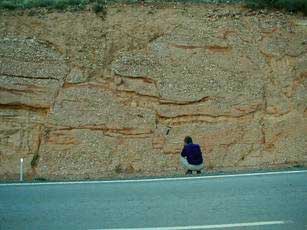| Road constructors are the friends of the impact geologists. Without their work, most of the highlighting impact outcrops in the Spanish Azuara and Rubielos de la Cérida impact structures would not exist, and many of the rocks typifying impact would not have been discovered. In the last decade, kilometers and kilometers of new geological exposures have been prepared, and we mention the road cuts between Luco de Jiloca and Lechago, at the Puerto Mínguez, between Navarrete and Barrachina, between Fuendetodos and Azuara, between Lécera and Muniesa, between Fuendetodos and Jaulín, and many more. Not only the road cuts but also the many new quarries mostly exploited for road construction material have supplied new geologic outcrops of high geologic importance, as for example the quarries between Belchite and Puebla de Albortón, the many temporary quarries between Navarrete and Barrachina, the large quarries of Corbalán, San Blas, Villafranca del Campo, near Muel, and so on.
The road cut at the crater rim and view down into the Rubielos de la Cérida impact basin. Only recently, the new road cutting into the Rubielos de la Cérida impact basin rim in the ascent between Alfambra/Escorihuela and El Pobo/Cedrillas has prepared a breath-taking extraordinary continuous geologic exposure of currently about 2 km length. The exposure does not show only the unimaginably disastrous forces of the impact excavation and modification of the Permotriassic/Buntsandstein and Muschelkalk rocks leaving a gigantic megabreccia, but also reveals large-scale rock deformations hitherto obviously unknown to geologists. We want to call them stop-and-go deformations.
The impact stop-and-go deformation is characterized by a multiple rapid sequence of erosion, sedimentation, folding, faulting and flow in a limited rock unit. This extremely peculiar process is not explicable by “normal“ geological forces and is understood only by the complex impact excavation and modification movements with permanently and in a short time strongly varying stress fields probably supported by the action of water and shock-produced volatiles.
Simple model of stop-and go deformation.
More stop-and-go deformations: megabreccia near Barrachina. Also see https://www.impact-structures.com/impact-spain/the-rubielos-de-la-cerida-impact-basin/megabreccias/ |
|
|
|
|
Skip to content
ERNSTSON CLAUDIN IMPACT STRUCTURES – METEORITE CRATERS
Research on impact geology, geophysics, petrology, and impact cratering







































































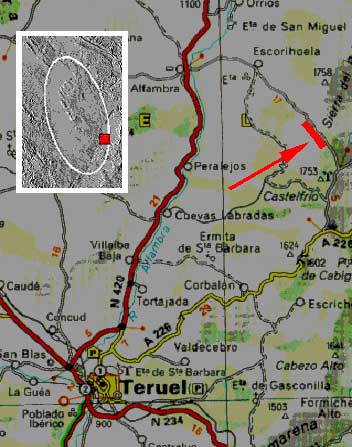 Location map.
Location map. 